Khujand
Khujand
Khujand is a major city located in the Tajik part of Ferghana valley at the both banks of the river Syr Darya, nearby the border to Uzbekistan, not far from Kyrgyzstan and separated from the rest of Tajikistan by the Fann mountains. It is said that the city was founded by Alexander the great during his conquest of the area already 2500 years ago and it is still an important center, quite often referred as the Tajikistan’s Northern “capital”. It is also told that there was a city called Cyropolis at the same location, founded by Cyrus the great, about two centuries before Alexander arrived here.
Khujand is a lot more wealthy than the other Tajik cities except of course Dushanbe. Nowadays the city houses about 175 000 citizens and a lot more in the surrounding Sughd province, which is the wealthiest province of Tajikistan. The city has gotten its name from a very well known Persian poet called the Kamoli Khujandi who was born here. There is also a mausoleum dedicated for him.
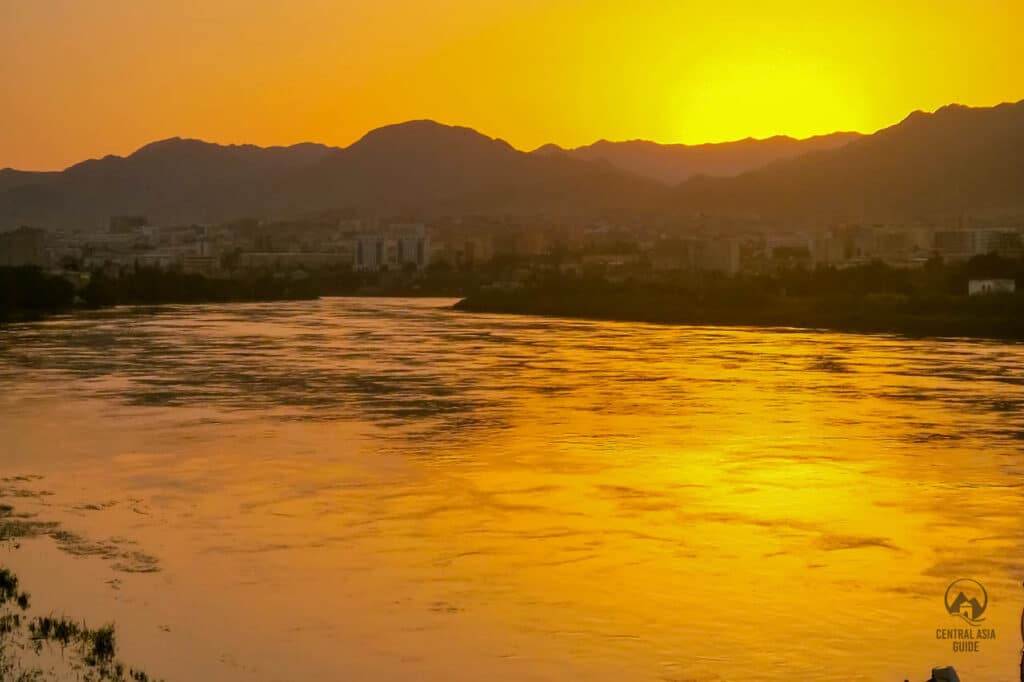
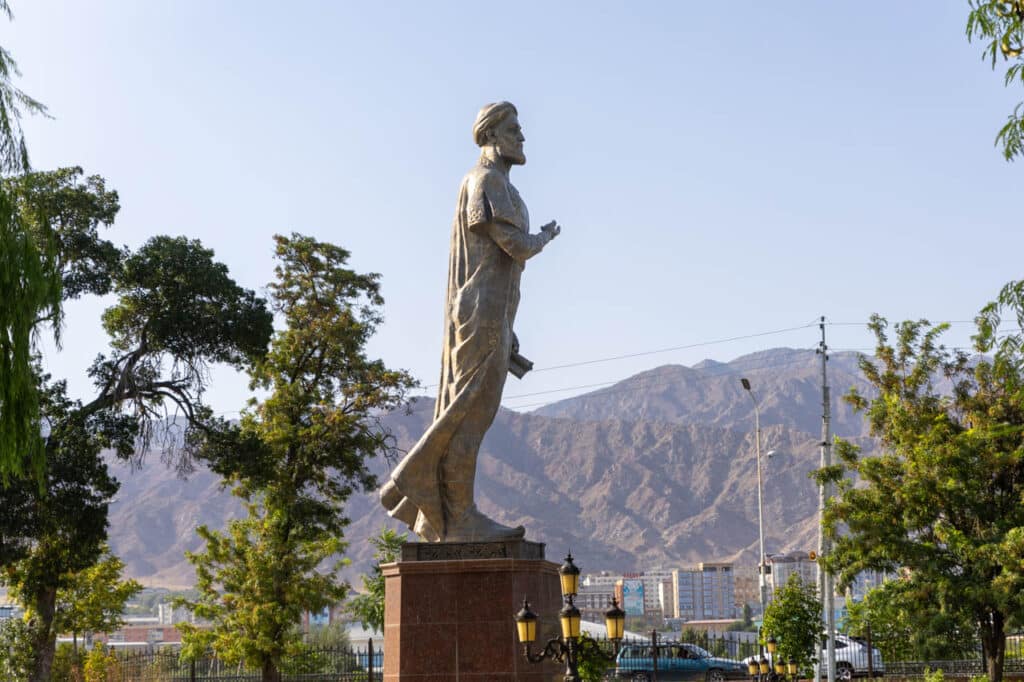
Khujand has a feel of a more real living city compared to Dushanbe having it’s drastic contrast with the new decorated high rises and the clay houses hidden away from sights. Khujand respects it’s history more and has some vibes of an Uzbek city, which is natural as it is located in the mostly Uzbek Ferghana valley and actually Khujand was actually originally an Uzbek city in contrast to Bukhara and Samarkand being Tajik cities but this is the way the lands and cities were divided to the Soviet states.
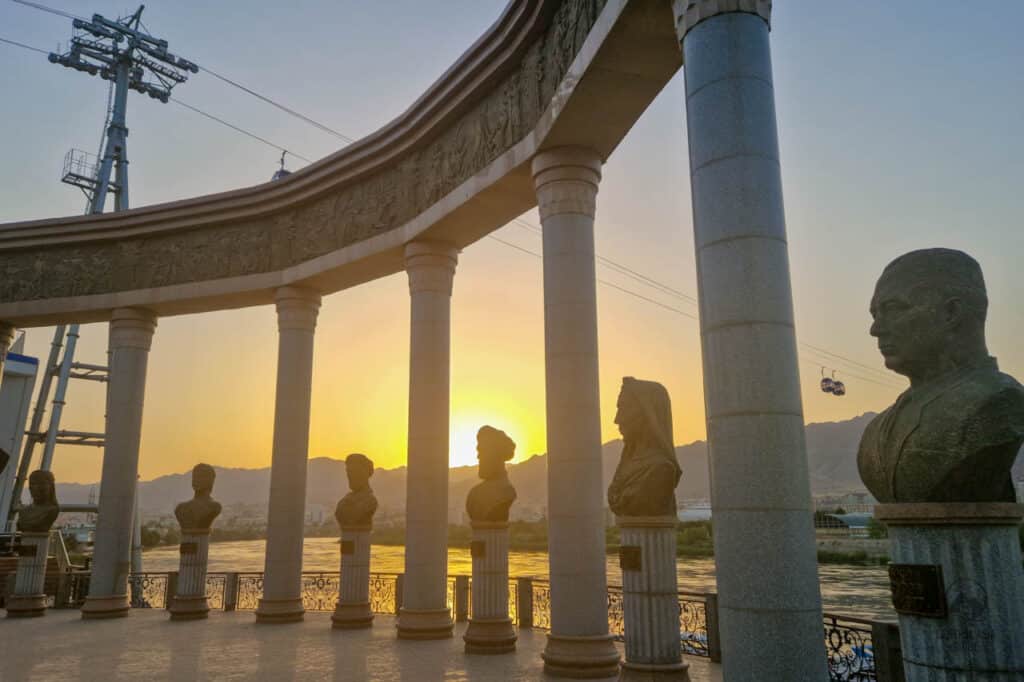

Some say that giving the town to Tajiks was a punishment for the disobedience of the Uzbek republic together with the founding of the Tajik republic officially, which used to be previously a subject of the Uzbek Soviet republic. Khujand was earlier named Leninabad and is still the home of the largest standing Lenin statue in Central Asia, though the 24 m Lenin has now been moved further from city center to the victory park making room for the Somoni at the most central location at the north side of the Syr Darya. The central area of the city along the Syr Darya southern bank is very pleasant and beautifully organized and can be easily explored by walking.
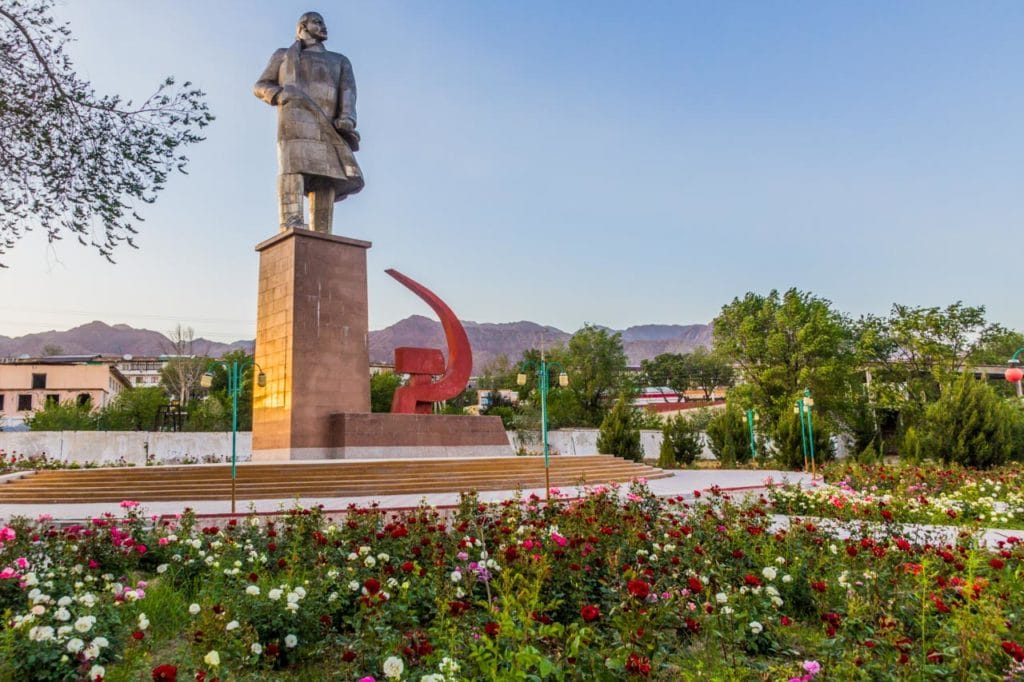
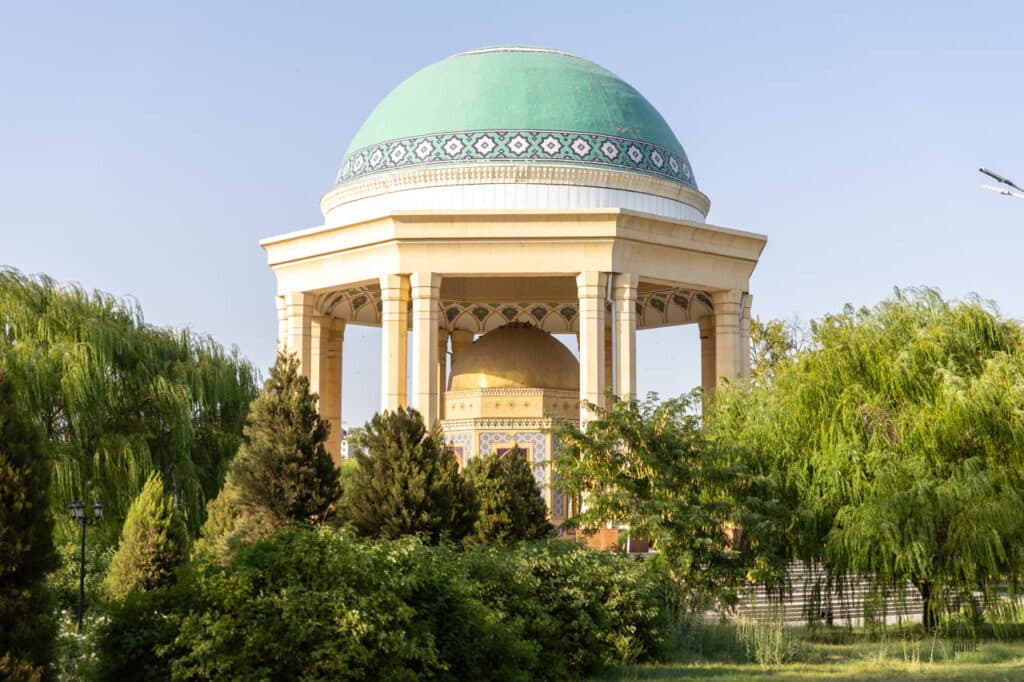
Tours Including Khujand
Khujand sights
The major Khujand sites are located around the park area located on both sides of the Syr Darya and the Khujand registan area, about 1 km southeast from the park/monument area, and are best reached by walk as most of them are located along the south bank of the river. Most of the hotels are located around the park area as well. There is a modern cable car that you can take to cross the river with nice views over the city and the Syr Darya river, especially during the sunset time.
At the north side of the Syr darya, there are several large complexes celebrating the 20 years of independence of Tajikistan including a football stadium, swimming pool and exhibition center and a hippodrome. The very popular Somoni park with a huge statue of Ismail Somoni is also located there and is a popular place for locals to walk around and to admire the lit fountains of the park and the large Lenin statue is located further west from the cable car. The bustling Khujand bazar and the nearby mausoleums and madrasas or the so called registan are a short taxi drive or a couple of kilometer walk away from the riverside.
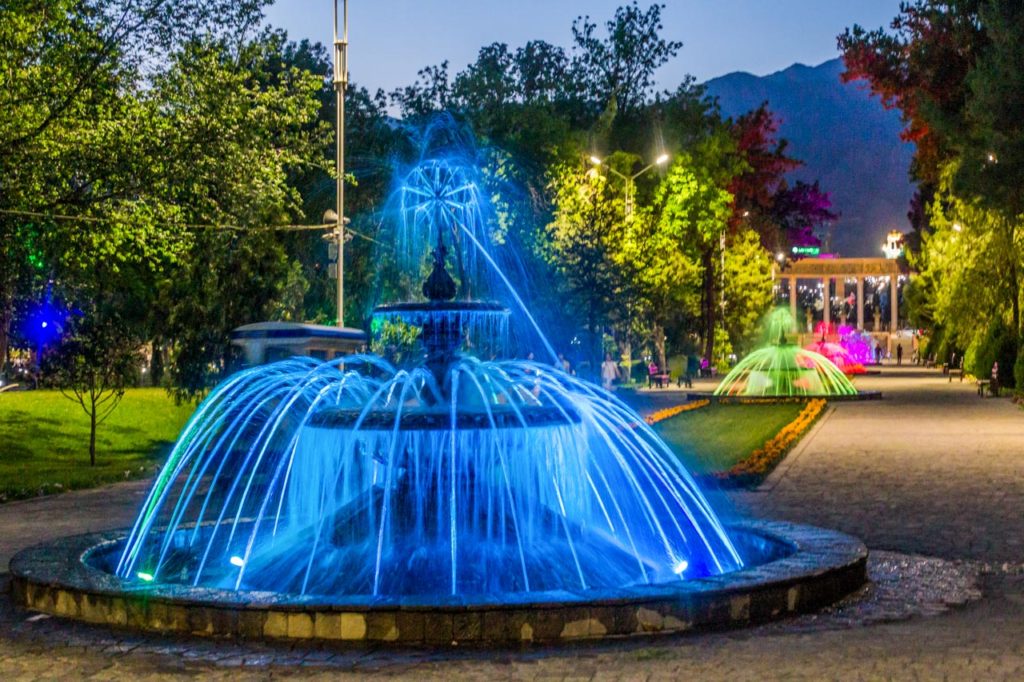
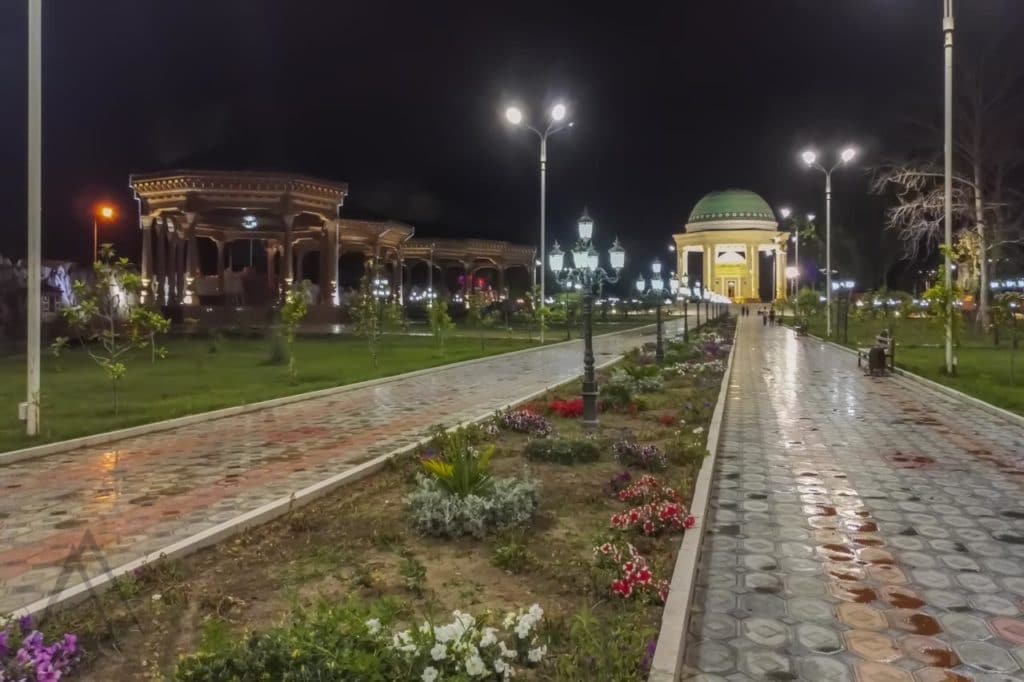
Kamoli Khujandi house museum
The Kamoli Khujandi House Museum, located at western end of the Khujand park area, is a display of a house that shows what wealthier homes, such as that of Kamoli Khujandi, in the 14th century would have looked like. The Kamoli Khujandi mausoleum (under a large dome with nice wooden decoration) is at a very central location, a little bit North from the house museum inside the park and next to Syr Darya but he is not really buried there.
Kamoli Khujandi is considered being one of the greatest romantic poets of the 14th century. He was born in Khujand but lived most of his life in Tabriz, Iran where he died and is buried. There are also several other monuments and fountains in the park stretching West to East and also South along the Ismoil Somoni street and Maksudjon Tanburi street towards the the Kamoli theatre.
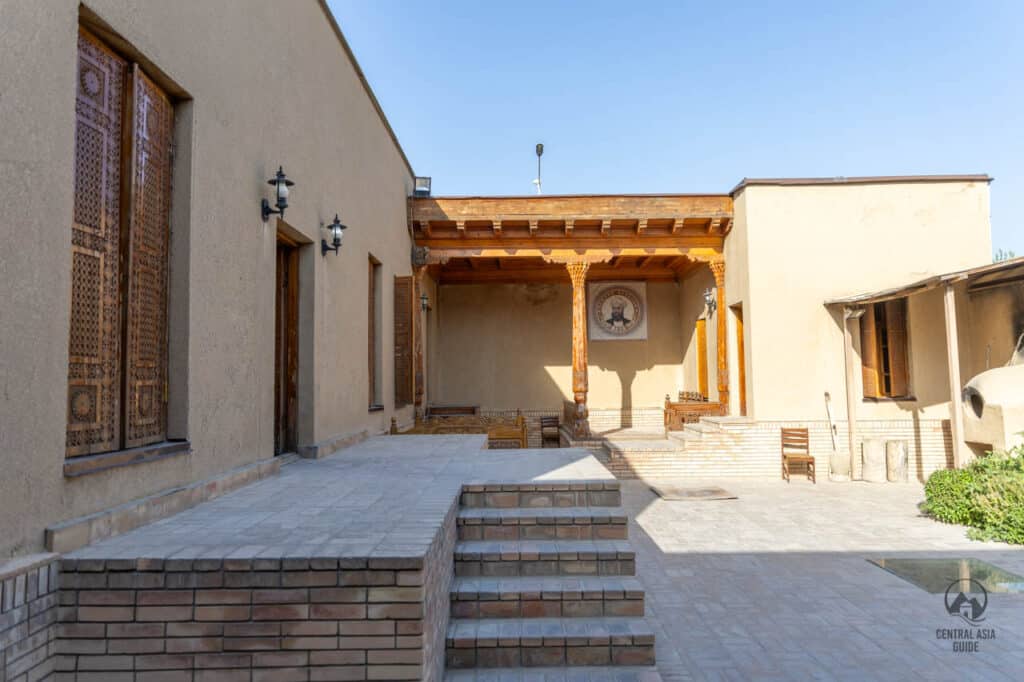
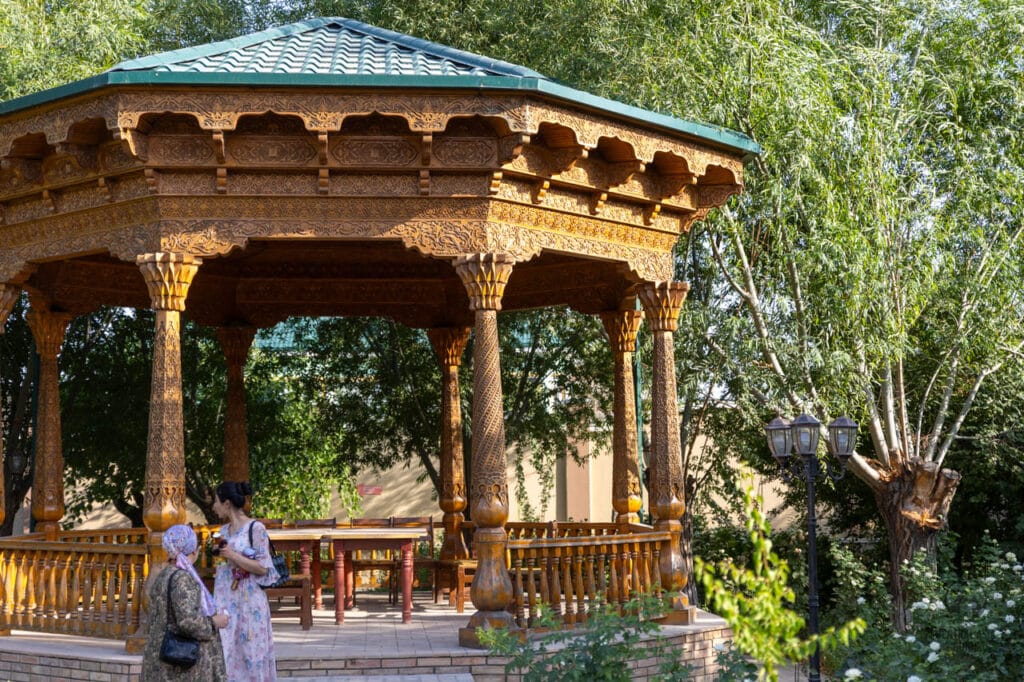
Panjanbe Bazaar & Registan Square of Khujand
The Panjshanbe two-floor bazar is the best place in town to acquire anything you need. The name of the bazar means Thursday in Tajik and is one of the largest bazars in Tajikistan and Thursday is still the busiest day of the bazar. The architecture of the bazar is a kind of a mix of Soviet and Uzbek/Arabic styles with the green and pink colors together with large arches at the roof held up by large columns reminding somewhat of a madrasa in its shape and design.
Khujand has a lively, populated registan with the bazar, Majid I Jami Mosque and a madrasa, and the mausoleum of Sheikh Musil ad-Din mausoleum. Look for a giant blueish/greenish dome and you can’t miss it. This is the Sheikh Musil ad-Din Complex dating back to 1394. It was built as a tomb for the Khujand-born 12th-century poet and miracle maker Sheikh Musil ad-Din. The original tomb was built in the 12th century, razed by Mongols like almost everything in the region and later rebuilt in 1394. The older minaret of the two at the square dates back to 1865.
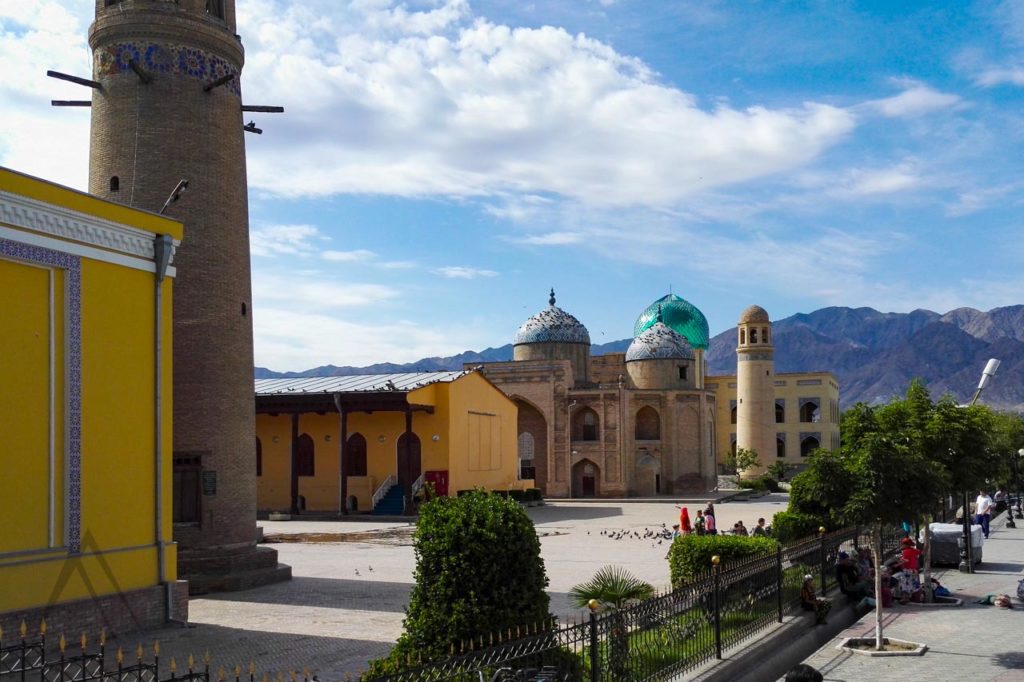
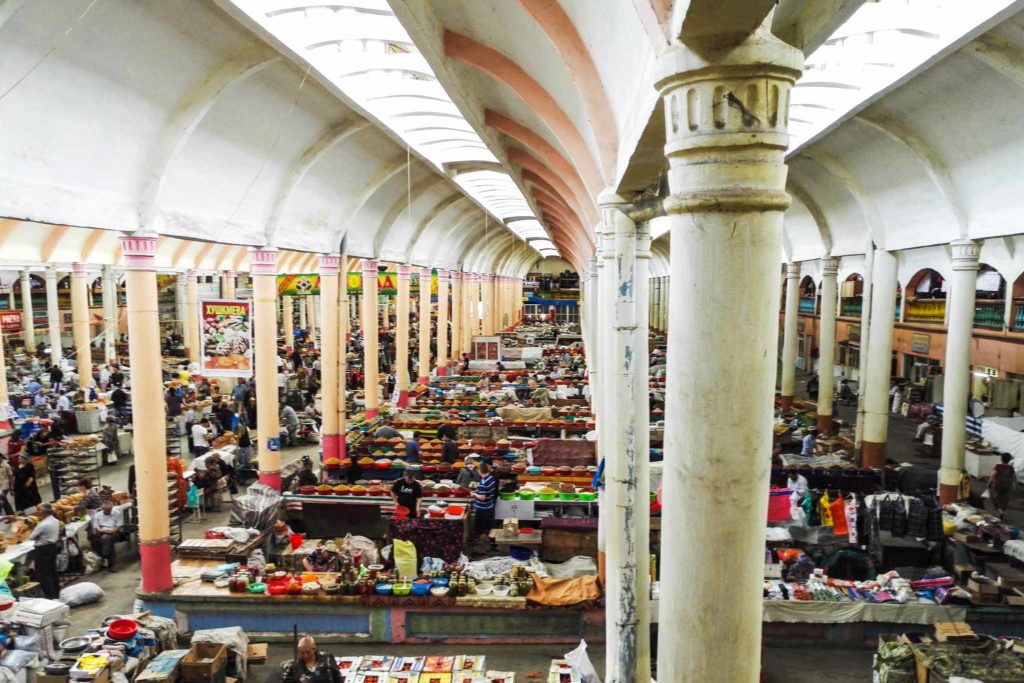
Khujand citadel fortress and museum
The Khujand Citadel has been partly restored and at the southeast corner of it is the Historical museum of the Sughd region with big wooden doors and several floors underneath has been built for it. The museum is well laid, has English speaking guides and tells about the history of the fortress and has many archaeological findings made in the fortress, for example a 4 meter statue of Temur Malik.
You can get a good view of the size of the citadel by climbing on top of it and walking along the ruins of the clay made mounts. From here you can also observe the surrounding park area and the Syr Darya river. Unfortunately the whole fortress area is being currently “restored” and a lot of new buildings are being built inside the fortress area and the area is being turned into a commercial tourist attraction.

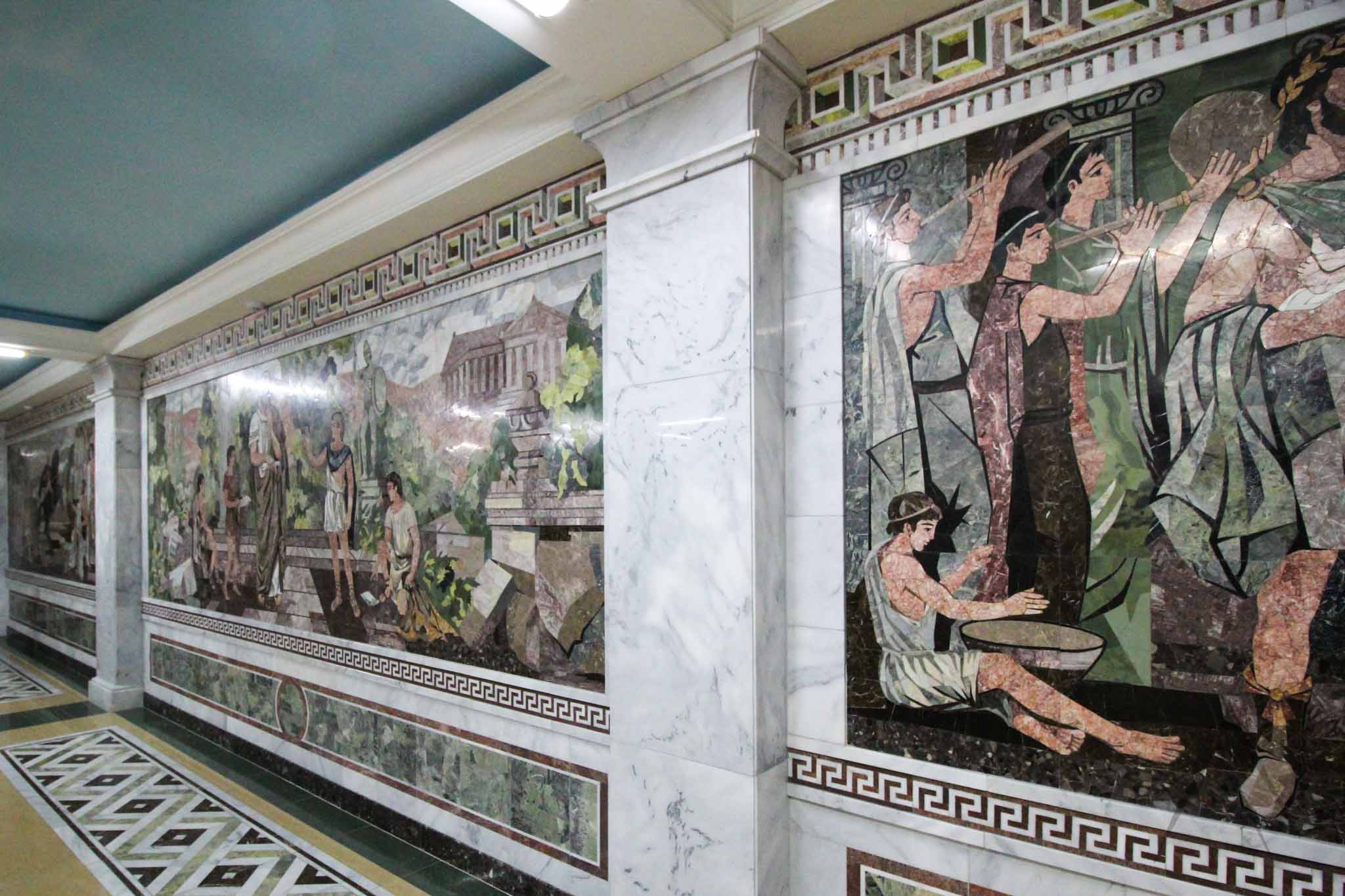
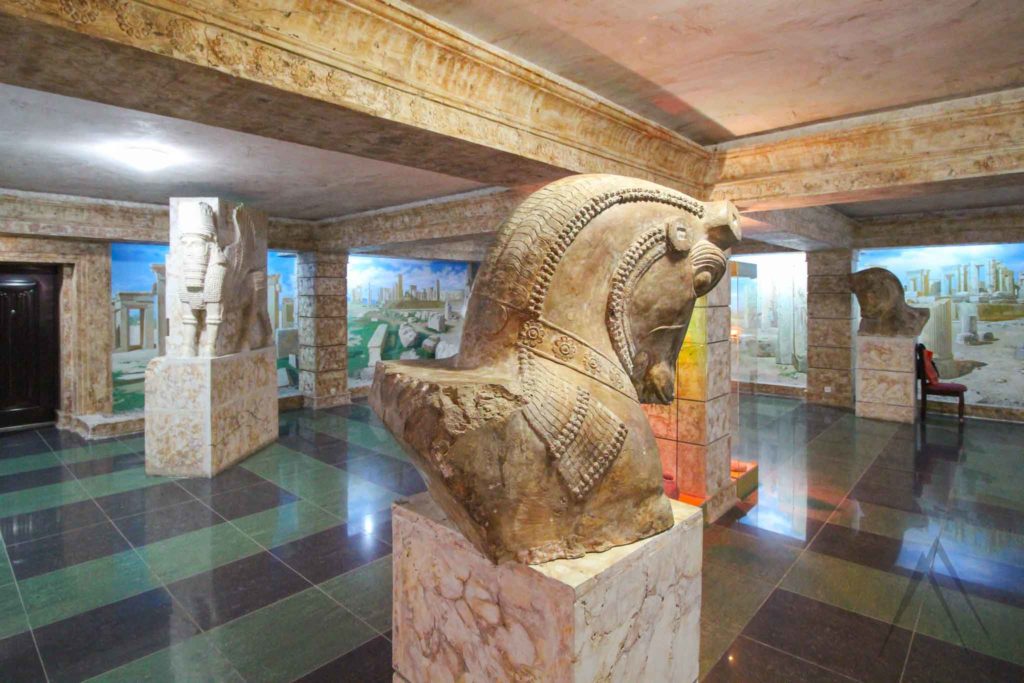
Palace of Arbob in Khujand
The Arbob palace was built to copy St. Peterburg’s Tzarist winter palace to the place of a collective farm, once outside Khujand just about a 15 minute (or 10 km) drive towards southeast. Now the palace is well within the city limits of Khujand. The palace is filled with Soviet memorabilia and history yet having a nice un-Soviet water garden and a very Tajik teahouse with wood carved columns outside in the garden with the same fusion of Tajik and Soviet style arts continuing inside the palace. The park in front of the palace is quite new and the trees are therefore quite small, not yet providing a lot of shade.
The palace was constructed by a social collective farm leader Urunkhujaev who had been impressed by the original winter palace and it was built as a communal hall for the local peasants. The palace had it’s peak moment in history when the counterparts of the Tajik civil war used it as a place of negotiations for ending the war. Urunkhujaev was well respected by even Stalin and the quality of the collective farm under his command was considered as one of the best in all the Soviet Union. Guides with English language are also available.

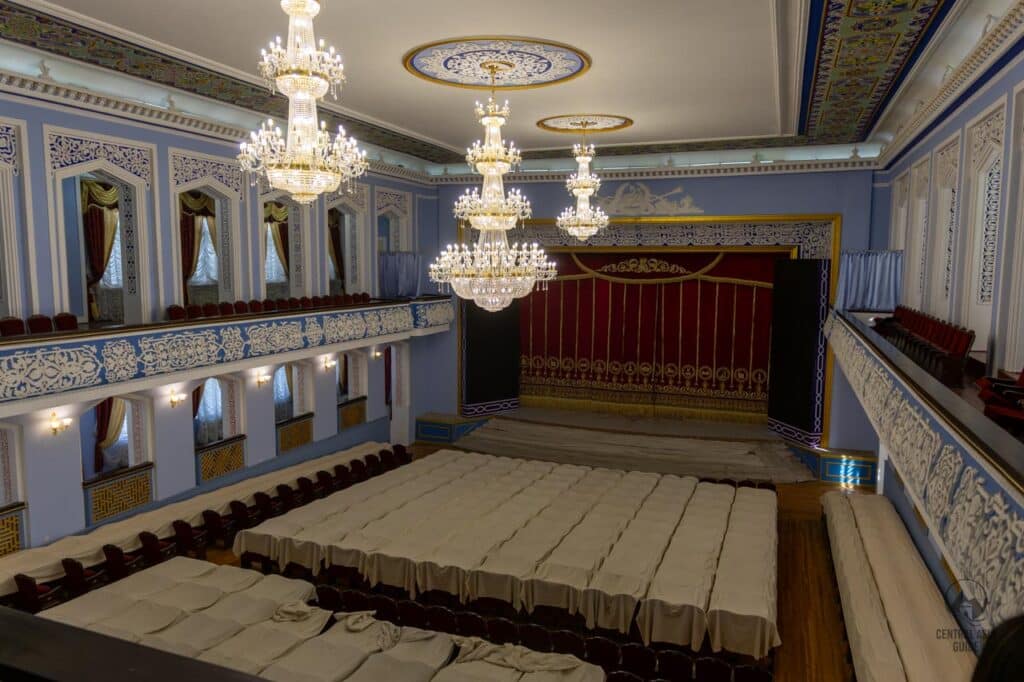
Sights around Khujand
Kairakkum reservoir
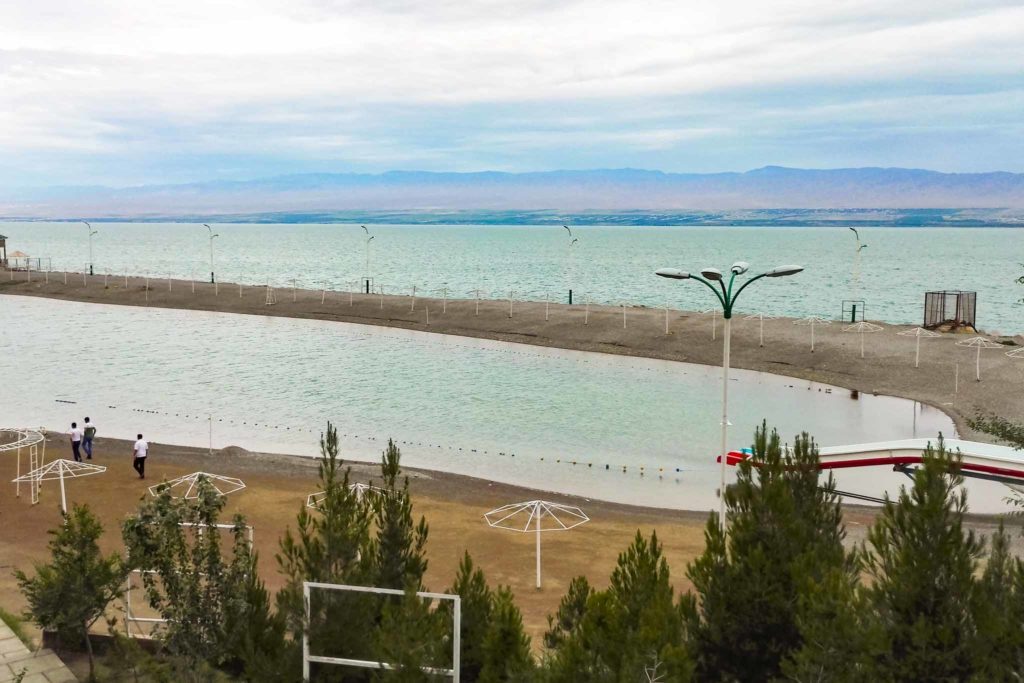
Kairakkum reservoir is about 20 km drive east from Khujand and is called often the “Sea of Tajikistan” by the locals. It is the largest reservoir in the Ferghana valley and has many Soviet type sanatoriums or resorts on all sides of it. Some of the places have stayed in the Soviet era but others have been recently upgraded and renovated to fulfill the needs of today and are also suited for foreign tourists.
The lake is a good place for a day trip from Khujand if you are in the region during the hottest summer period. The water on the other hand is not very clean so we do not recommend swimming in the Kairakkum reservoir.
Asht salt lake with sanatorium
North from Khujand, on the way to Asht, there is a well kept secret from foreign tourists. A salt lake with sanatorium has been built here during the Soviet times. People who want to clean their body from bad substances, or to treat their skin, bathe in the salty, sulphurous waters of the Aksikon lake, as the locals call it, for a week without taking a shower in between. There are separate sides for men and women at the eastern end of the lake, with a small ridge separating the sites from each other.
The lake gets filled with water during the snow melt time but the water evaporates during the hot summer period leaving only the salt that is protecting a black mineral rich mud underneath. If you visit this site, make sure to visit during the early morning as it gets super hot here during the summer time with the white salt reflecting the sun and the nearby hills preventing any cooling breezes from entering the lake.
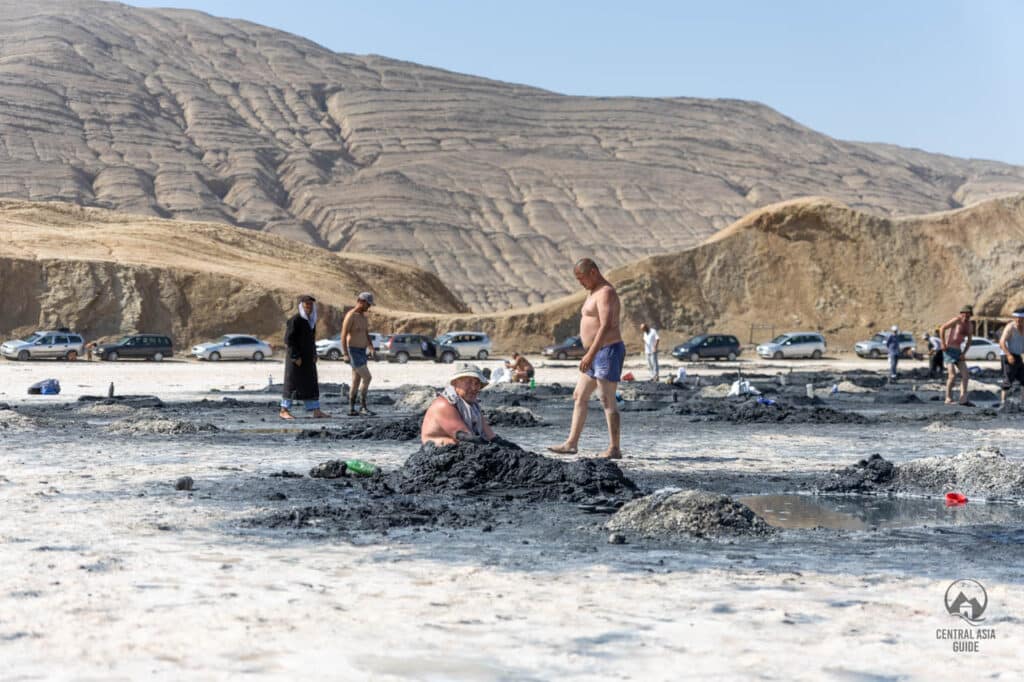
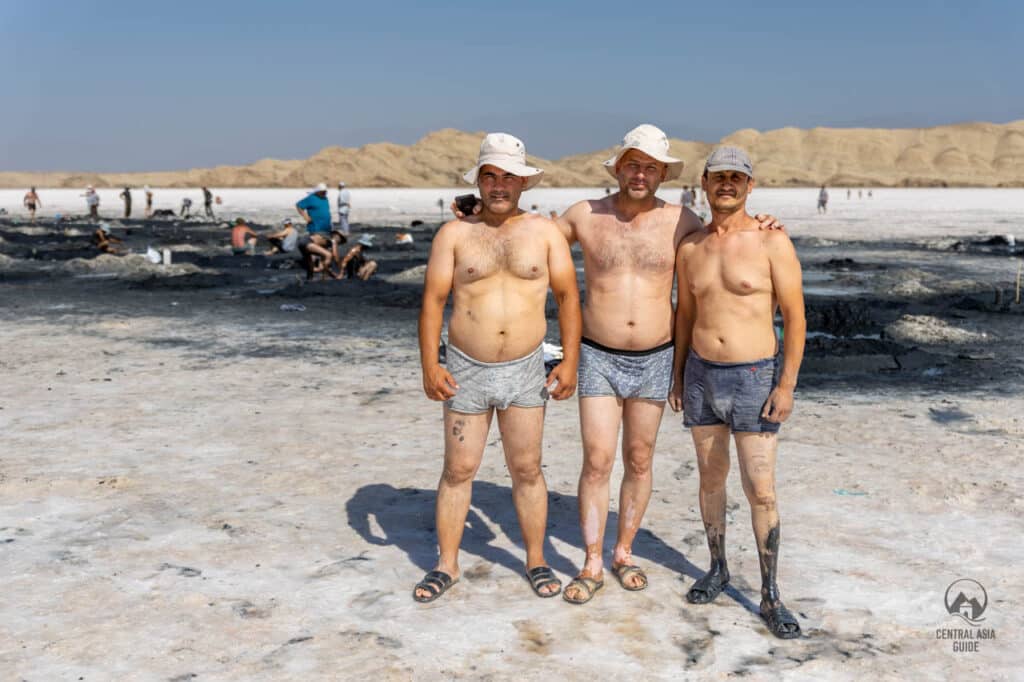
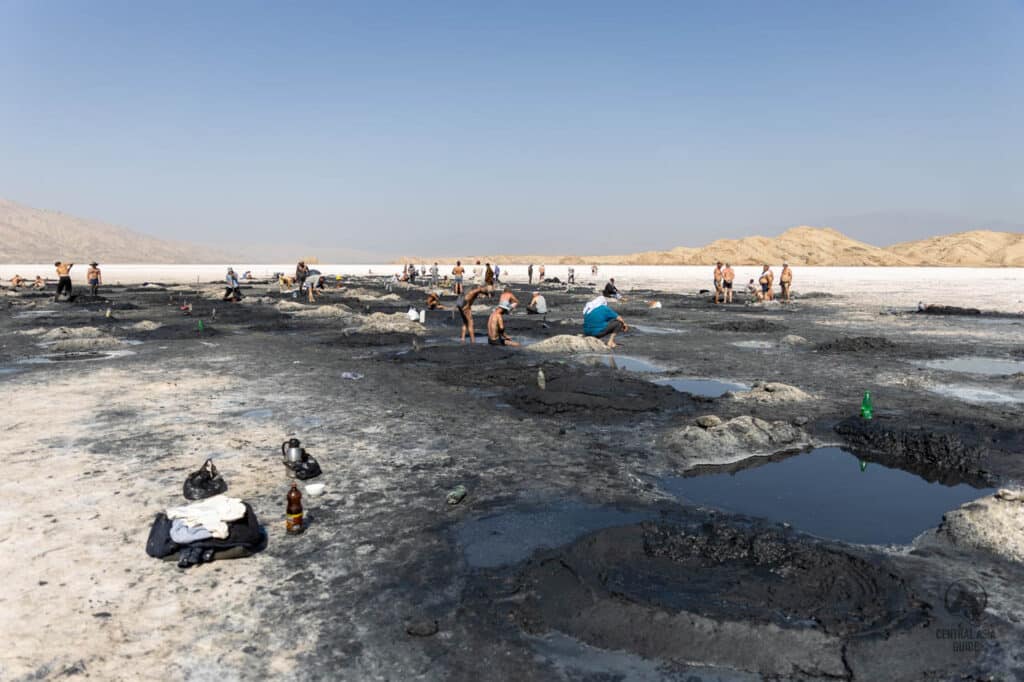
Travel to Khujand
You can reach Khujand from Dushanbe by wheels with shared taxis within 5 hours from Dushanbe. The road is quite spectacular with high passes, long dark tunnels and huge elevation differences and views with different colored mountains and small villages in the valleys and plateaus. Marshrutkas can take you to Isfana and Istravashan several times a day from Khujand. Penjikent and Samarkand can also be reached by public transportation on wheels making Khujand a great base to explore Fergana valley and Northern Tajikistan
Khujand can be reached by roads from many directions also from the neighboring countries:
1. There is a border crossing point to Uzbekistan about 1-hour drive northwest called Oybek, open 24/7 and is the easiest way to reach Tashkent which is actually only 100 km away.
2. Khujand can also be reached from east, from Uzbek Ferghana valley, through the Konibodom – Beshariq border from cities like Kokand, Fergana, Namangan, Andijan, and Osh from Kyrgyzstan.
3. A border south to Kyrgyzstan towards Isfana is called the Kulundu – Ovchi border and can be also passed by tourists. There are also other border control points but they are only bilateral for the citizens of the two neighboring countries.
Note: The Tajikistan – Kyrgyzstan border is currently closed due to the political relationship between the two countries.
There are flights from Dushanbe to Khujand few times a week and it’s airport is also well connected to many Russian cities like Moscow and St. Petersburg as there are many people working in Russia from this area of Tajikistan as well.
Khujand can also be reached by train via Uzbekistan from Samarkand and the rails continue all the way to Moscow. The trains tend to be very infrequent though. The train station is away from the city center area, close to Khujand airport, about 15 km southeast from the city center. Also the visa requirements of the train traveling might become quite bothersome as you might need to obtain different type visas for Uzbekistan and Kazakhstan depending on your nationality.
Sights & destinations near Dushanbe
Page updated 25.12.2023